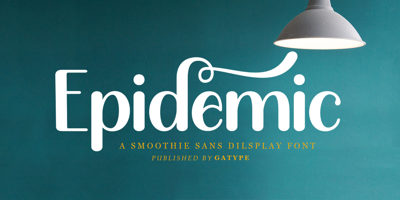Web Performance: Tips for Optimizing Fonts
Web Performance: Tips for Optimizing Fonts
Beautiful typography shouldn't come at the cost of slow page loads. Font files can significantly impact website performance, but with the right optimization techniques, you can have gorgeous fonts and lightning-fast speeds. Here's how to optimize fonts for maximum performance.
Why Font Optimization Matters
Font files can easily add hundreds of kilobytes to your page weight. Multiple font weights and styles compound the problem. Slow font loading creates several issues: delayed text rendering, layout shifts, frustrated visitors, and lower search engine rankings.
Google considers page speed a ranking factor. Optimizing fonts isn't just about user experience—it directly impacts your site's visibility.
Choose the Right Font Format
WOFF2: The Modern Standard
WOFF2 (Web Open Font Format 2) offers the best compression, reducing file sizes by 30% compared to WOFF. All modern browsers support it, making it your primary format choice.
Always serve WOFF2 first in your @font-face declarations:
@font-face {
font-family: 'CustomFont';
src: url('font.woff2') format('woff2'),
url('font.woff') format('woff');
}
Skip Unnecessary Formats
Unless you're supporting Internet Explorer 8 or older, you don't need TTF, OTF, or EOT formats. WOFF2 and WOFF as fallback cover 99%+ of users. Fewer formats mean fewer files to manage and faster loading.
Limit Font Weights and Styles
Every font weight (light, regular, bold, black) and style (italic, oblique) is a separate file. Loading six weights can easily add 500KB to your page.
Audit Your Actual Usage
Review your design and identify which weights you truly need. Often, regular (400) and bold (700) are sufficient. If you're only using light weight once, consider redesigning to eliminate it entirely.
Use Variable Fonts
Variable fonts contain multiple weights in a single file. Instead of loading separate files for each weight, one variable font file adjusts dynamically. This can dramatically reduce the number of HTTP requests and total file size.
Implement font-display
The font-display property controls how text displays while fonts load. This small CSS addition has massive performance implications.
font-display: swap (Recommended)
@font-face {
font-family: 'CustomFont';
src: url('font.woff2') format('woff2');
font-display: swap;
}
This shows fallback fonts immediately, then swaps to custom fonts once loaded. Users see text instantly rather than staring at blank space.
Other Options
font-display: block- Hides text briefly (3 seconds), then shows fallback if font hasn't loadedfont-display: fallback- Very brief hide, then shows fallback permanently if font doesn't load quicklyfont-display: optional- Browser decides whether to use custom font based on connection speed
For most websites, swap provides the best user experience.
Preload Critical Fonts
Preloading tells browsers to download fonts immediately, before CSS is parsed. This eliminates render-blocking behavior for above-the-fold content.
Important: Only preload fonts used immediately on page load. Preloading too many fonts defeats the purpose and slows everything down. Focus on your primary body text or headline font.
The crossorigin attribute is required even for same-origin fonts due to how browsers handle font requests.
Subset Your Fonts
Most fonts include thousands of characters supporting multiple languages and special symbols. If your website is English-only, you don't need Cyrillic, Greek, or Chinese characters.
Create Custom Subsets
Tools like Glyphhanger or FontSquirrel's Webfont Generator let you create font files containing only the characters you need. An English-only subset might be 30-50KB instead of 150KB.
Use Unicode-Range
Define specific character ranges in your CSS:
@font-face {
font-family: 'CustomFont';
src: url('font-latin.woff2') format('woff2');
unicode-range: U+0000-00FF;
}
This tells browsers to only download this font file if the page contains characters in that range.
Self-Host Instead of CDNs (Sometimes)
While Google Fonts' CDN is fast, self-hosting can be faster because:
- One fewer DNS lookup
- Better caching control
- No third-party privacy concerns
- Ability to subset and optimize files
Use tools like google-webfonts-helper to easily download and self-host Google Fonts with optimized CSS.
Optimize Loading Strategy
Asynchronous Loading
Load fonts asynchronously to prevent blocking page rendering:
For Google Fonts, preconnecting to their servers speeds up the subsequent font requests.
Critical CSS
Include font-face declarations in critical CSS that loads inline in your HTML head. This eliminates the extra request needed to fetch your external stylesheet before fonts can start downloading.
Cache Aggressively
Set long cache expiration headers for font files. Fonts rarely change, so caching them for a year is reasonable:
Cache-Control: public, max-age=31536000, immutable
The immutable directive tells browsers this file will never change, allowing even more aggressive caching.
Monitor and Measure
Use Lighthouse
Chrome's Lighthouse tool identifies font-related performance issues. Run audits regularly to catch problems early.
Check Real-World Performance
Tools like WebPageTest show exactly how fonts impact loading. Look at waterfall charts to see when fonts download and how they affect rendering.
Set Performance Budgets
Establish maximum file sizes for fonts. For example: "Total font weight cannot exceed 150KB." This forces conscious decisions about which fonts truly matter.
Fallback Font Matching
Minimize layout shift when custom fonts load by matching fallback font metrics closely. Use tools like Font Style Matcher to adjust fallback font size, line height, and letter spacing to approximate your custom font.
This reduces the jarring jump when fonts swap.
Final Thoughts
Font optimization is about balance. Beautiful, brand-appropriate typography matters, but not at the expense of user experience. Apply these techniques systematically:
- Choose modern formats (WOFF2)
- Limit weights and styles
- Implement font-display: swap
- Preload critical fonts
- Subset when possible
- Self-host for maximum control
- Cache aggressively
- Monitor performance regularly
Great typography and fast performance aren't mutually exclusive. With proper optimization, you can have both—and your users will thank you with longer visits and better engagement.



